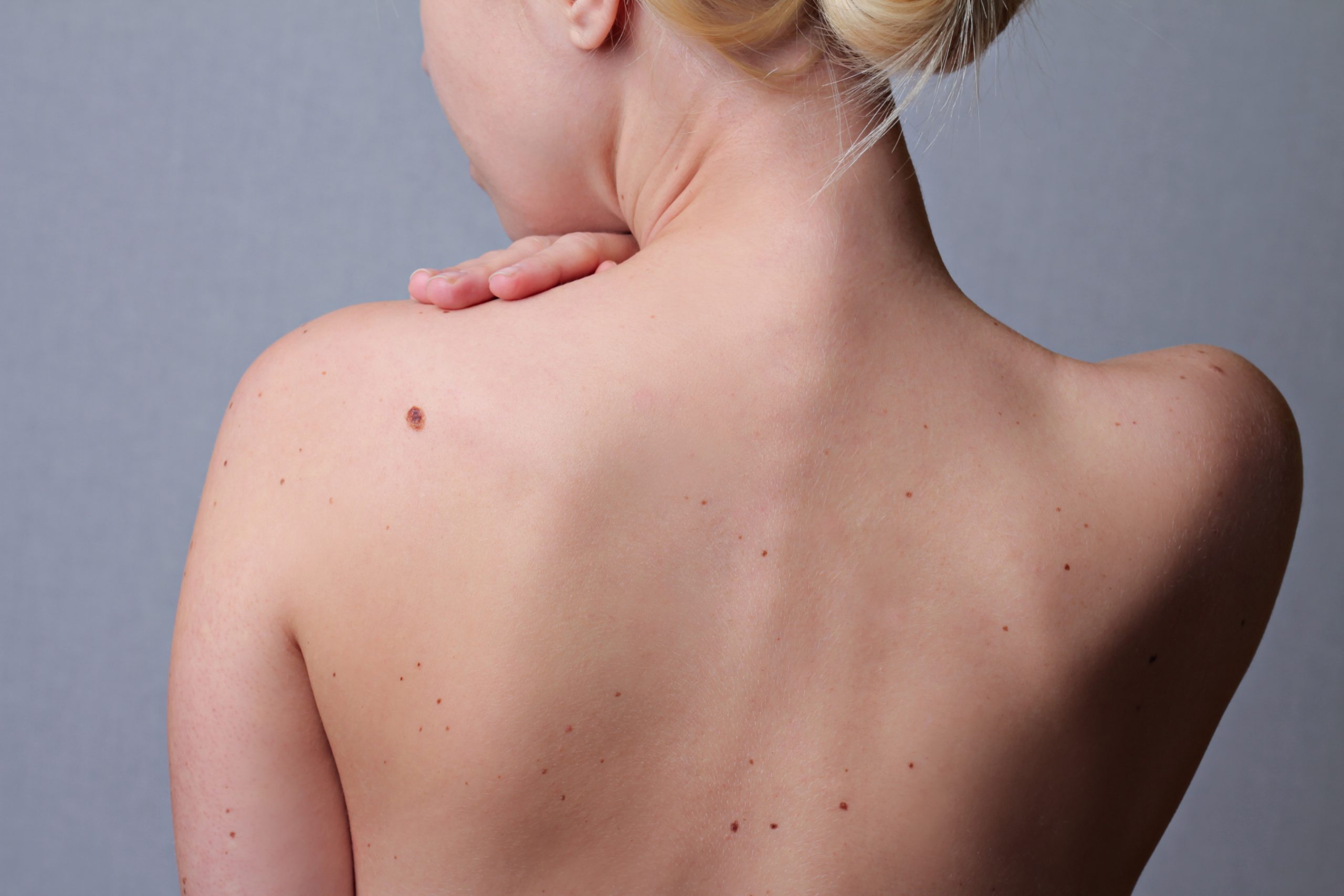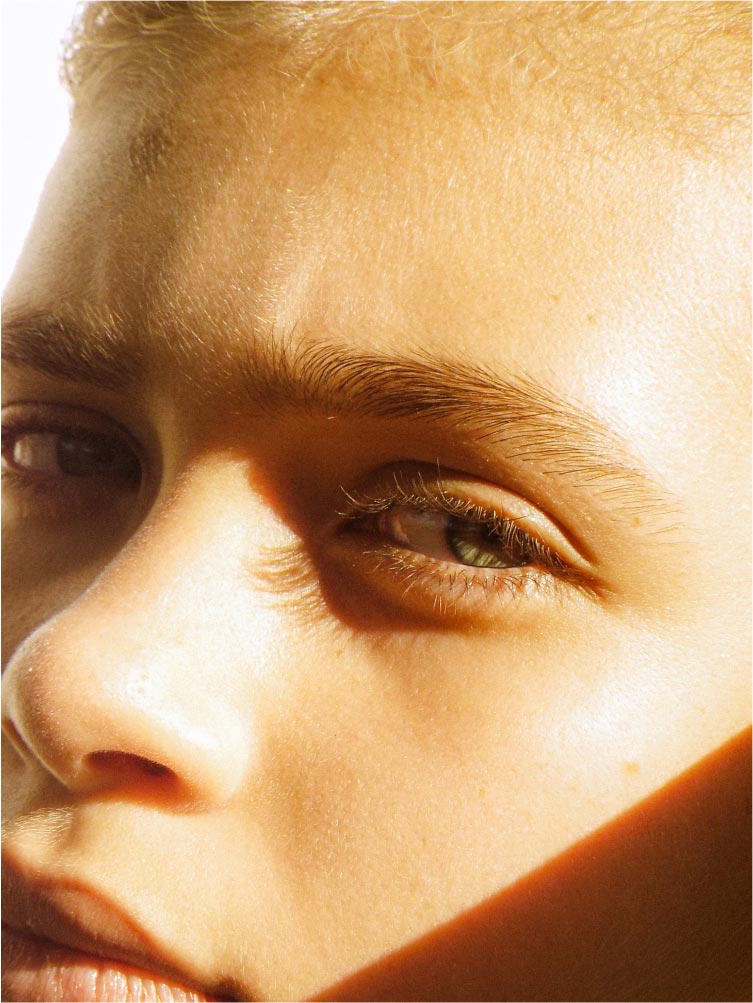Photodynamic Therapy
Photodynamic therapy is a non-invasive treatment that addresses superficial skin cancers, pre-cancer sunspots, acne, and ageing skin. On Point Skin Cancer offers professional and affordable photodynamic therapy sessions within Brisbane, Tweed Heads, Gold Coast and the Sunshine Coast.
What is photodynamic therapy?
Photodynamic therapy (PDT) (also known as, phototherapy) is a therapy that uses a drug called photosensitisers (molecules that can be activated by light) and light to kill cancer cells and precancerous cells while mostly leaving the surrounding healthy tissue unaffected.
Photosensitisers only work when “activated” by light and are nontoxic before contact with the light catalyst. However, once the light has been applied, the photosensitiser harms the targeted area, destroying cancerous and precancerous abnormal cells.
The photosensitising agent is either injected into the bloodstream or applied to the skin, depending on the part of the body being treated. Photodynamic therapy can treat sun damage (solar keratoses) and shallow skin cancers such as IECs and superficial BCCs. Daylight Photodynamic Therapy is also suitable for sun damage and precancerous lesions.


What are the advantages of photodynamic therapy?
PDT has advantages over traditional therapies and cancer treatments such as surgery, radiation and chemotherapy. It is a targeted therapy that destroys cancerous cells while minimising damage to healthy tissues selectively.
Limited damage to healthy cells
The photosensitisers tend to accumulate in abnormal cells, so the light is focused directly on the intended treatment area during photodynamic therapy rather than on normal cells. This reduces damage to normal cells and instead can selectively destroy the affected area with the photosensitising chemical.
There is no lengthy recovery time
Due to its minimally invasive nature, PDT can be performed as an outpatient procedure and does not require a long recovery period. This means in comparison to surgery, this treatment can be far more convenient and cost-effective.
The treatment is repeatable
As photodynamic therapy is an easily managed and relatively easy treatment option, the therapy can be repeated as many times as required. In addition, the treatment usually only comes with light discomfort, meaning most patients aren’t in too much pain and can repeat the photodynamic therapy as recommended.
More cost-effective than other treatment options
As photodynamic therapy is less invasive than other cancer treatments, the price reflects this. Especially when compared with traditional surgeries or more invasive options.
A well-tolerated treatment option
Most people don’t have too many problems with the photosensitising agents involved in photodynamic therapy. The most common side effects are usually temporary redness and swelling on the treated area, which will usually go back to normal in a few days, if not about a week.


Is Photodynamic therapy painful?
While some patients do experience discomfort and pain during the treatment, this can be easily measured with painkillers. When the light source is applied, some patients can experience some discomfort or a burning sensation because the photosensitising agent makes the skin more sensitive to light. This stinging sensation is mild and manageable. If you have any questions regarding pain relief measures to ensure your comfort, please don’t hesitate to contact our friendly team, and we can help you to organise a pain plan you are comfortable with.
What is the cost of photodynamic therapy?
With On Point Skin Cancer, PDT treatments will only leave you $220 out of pocket. As photodynamic therapy can help to manage sun-damaged areas and potentially prevent a future of surgeries and other treatments, this is a reasonable investment. PDT treatment is a cost-effective treatment for sun-damaged skin and a valuable treatment option for avoiding future problems.
Why choose On Point Skin Cancer?
Doctors dedicated to skin cancer treatment
Our skin cancer clinics are doctor-owned, so you can trust us to take care of you and perform safe and effective photodynamic therapy sessions. Using the latest equipment and technology, we proudly offer our patients the highest quality care within our clinics. As a result of our strong technical skills and deep knowledge of skin cancer, we can provide you with a thorough treatment every time.
Passionate about skin cancer education
Our dedicated team are passionate about empowering you to make the best decisions regarding your health, and they will always provide you with personalised information and advice. Skin cancer is the most common cancer in Australia, with 1 in 3 Australians developing skin cancer in their lifetime. If you have yet to get a recent skin check, we recommend booking a skin check.
Easily accessible locations
With clinics in Brisbane, Tweed Heads, Gold Coast and the Sunshine Coast — On Point Skin Cancer is an easily accessible destination for all of your skin cancer needs.
Healthcare and concession card holders are bulk billed.
We are able to bulk bill all health care and concession card holders. As a result, we can provide more treatment to more people.
Professional and friendly staff
Our team of staff are dedicated to ensuring you have a comfortable experience within our clinic. You can ensure that you will be treated with the utmost professionalism by our friendly team when booking in at one of our clinics.
We offer same-day appointments.
We know how annoying it can be having to wait long periods in order to book your service. That's why we do our best to accommodate same-day appointments and fast turnaround times so we can look after you sooner.
It is important to note that PDT may not be appropriate for all patients or all conditions. However, it can be a valuable tool in preventing future surgery by selectively destroying abnormal and cancerous cells and reducing the need for more invasive operations or cancer treatments in some cases.
If you have any questions about PDT treatment or any of our other available skin cancer treatments, please don’t hesitate to get in touch with our team.
Photodynamic Therapy FAQ
Here are some answers to our frequently asked questions on Skin Cancer Checks. Still have questions? Chat to our friendly team when you come in for your skin cancer check.
At On Point Skin Cancer Clinic, we have practices in Kangaroo Point in Brisbane, Tweed Heads, Sunshine Coast and Gold Coast. We’re proud to be the trusted skin cancer clinic in Brisbane, Gold Coast, Tweed Heads, and Sunshine Coast. Book in to see us at one of our skin cancer clinics, and we will book you in for photodynamic therapy with one of our experts.
With us, you can get a skin cancer examination and treatment for skin cancers and UV-related skin conditions. If you are concerned about cancerous cells, suspicious moles or freckles, then we recommend booking a skin check. We also offer reviews and removal of sutures, cryotherapy, biopsy procedures, simple excisions, complex excisions and reconstructive excisions for the face, flaps and skin grafts.
Sometimes, even if skin cancers are visible, you won’t notice new spots on your own skin, particularly if they’re not in a spot you see in the mirror regularly. Other times, you may notice a spot is present, but not realise it’s a suspicious spot that needs to be checked. For this reason, and others, even if you don’t have many existing freckles or moles, it’s important to still get a skin check every 12 months in Australia.
On the day of your appointment, we ask that you come into the clinic with completely clean skin. This means that we ask you to wash the affected area prior to the appointment and refrain from wearing makeup, moisturiser, sunscreen or any other perfumes or beauty products on the affected area.
The after-effects of photodynamic therapy are usually pretty minimal. Depending on the location of the treatment, the skin may be red and swollen for a few days to a week after treatment. In some cases, blistering may also occur, lasting hours to days. It is also possible that your skin may have a burning sensation or be itchy or discoloured after treatment.
PDT is not covered by Medicare, but you may be covered depending on your policy and level of coverage. Check with your insurance provider to see if this treatment and its associated costs are covered. It is important to understand and confirm whether you are covered to avoid being liable for costs later in the process.
Yes! A trained healthcare professional will assess and examine your skin to look for any unusual or suspicious spots, moles, freckles, and lesions. This procedure can vary in duration, depending on your history and the size of the area being assessed. The healthcare professional will recommend a biopsy for further testing if anything concerning is found.
Dedicated to providing high quality skin cancer care
On Point Skin Cancer Clinic is a modern, professional, affordable and easily accessible practice dedicated to the diagnosis, investigation and complete management of skin cancer.
